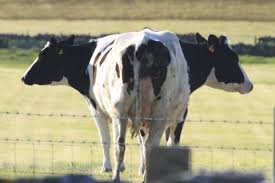
A few days ago we tweeted that the 2014 Farm Bill on deck for this week’s vote would be good news/bad news for conservation. And in recent weeks we’ve blogged about how Congress’ failure to reauthorize the Farm Bill this past summer created harmful gaps in conservation programs this fall. So now that both the Senate and House have finally passed the bill, how does conservation fare?
Based on news reports and announcements from conservation groups, we’ve summarized some highlights here.
The good news: locally produced food got a big boost.
SNAP, the Supplemental Nutrition Assistance Program (formerly known as Food Stamps to those of us alive in the 20th century) grabbed headlines this summer when the House threatened to cut $40 billion from the program for low-income people. In the end, Congress cut $8 billion, largely by closing what many consider to be unintended loopholes. But tucked away in the SNAP provisions is $100 million to provide matching funds for farmers markets to encourage SNAP recipients to buy local fruits and vegetables. Similar programs in many states allow recipients to double the value of their benefits through farmers market purchases (including in Virginia, Maryland and DC) with significant results. Now, the federal government is authorized to spend $20 million a year for the next five years to provide similar benefits throughout the country.
Other existing local food programs got an increase in funding, including the Farmers Market Promotion Program (that provides grants to communities and others to promote local food), the Community Food Project Grants program (which provides one-time grants to nonprofits to advance local food in their communities), and the Senior Farmers Market Nutrition program (which provides grants to states, territories and tribes to provide coupons for seniors to exchange at farmers markets and other local food outlets).
More good news: crop insurance is now tied to good conservation practices.
In order to receive federally subsidized crop insurance, farmers now will have to adopt practices to conserve highly erodible land and wetlands – a big plus for water quality. In addition, crop insurance will be more available to organic farmers who don’t use pesticides or synthetic fertilizers.
The not-so-good news: land conservation programs were reduced.
As they say, it’s complicated. The Farm Bill consolidates and cuts a number of land conservation and easement programs, including reducing the cap in the Conservation Reserve Program, in which farmers receive payments to take environmentally sensitive lands out of production. The last Farm Bill in 2008 reduced the eligible acreage to 32 million acres (down from 39 million previously). This bill reduces that further to 24 million acres. In addition, the bill cuts the amount of acreage eligible for the Conservation Stewardship Program, which pays farmers for good conservation performance. The new cap is 10 million acres, down from 12.8 million acres under the previous Farm Bill. Overall, funding for conservation programs was cut $6 billion from the last bill, authorizing $57.6 billion for the next 10 years.
But the Chesapeake Bay region could still come out ahead. That’s because the bill also created a new program called the Regional Conservation Partnership Program. This program is intended to target family farms operating in critical conservation areas such as the Chesapeake Bay watershed, and provide additional resources to them for implementing practices that reduce pollution.
It’s hard to predict just what these changes will mean for water quality at the end of the day (or rather, at the end of five years when this bill expires). But on balance, most conservation groups agree: The alternative – years of uncertainty and unfunded programs – would have been far worse.


Good synopsis Amy. You are right, it’s pretty complicated. Rule making is next, then appropriations….it just takes too long.